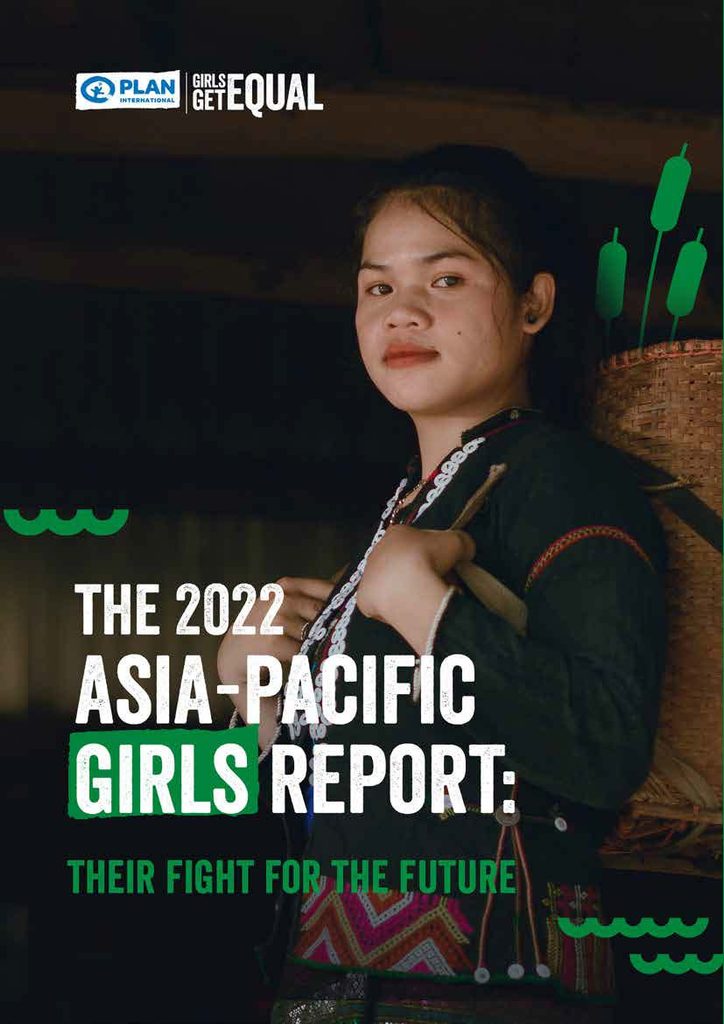The 2022 Asia-Pacific Girls’ Report: Their Fight for the Future
This report highlights the climate actions of young female activists in the Asia-Pacific and the unique challenges girls and young women face regarding their leadership capabilities throughout the region.

Plan International Asia-Pacific Regional Hub (APAC) invested in girls’ leadership in Asia and the Pacific and in March 2020 launched the first Asia Girls Report that presented the Asia Girls’ Leadership Index, followed by the launch of the Pacific Girls’ Leadership Index in 2021.
Using available data from globally recognised databases, the Girls’ Leadership Indexes (GLI) measure the opportunities of adolescent girls and young women in 19 South and Southeast Asian counties and 14 Pacific Island member countries and territories of the Economic and Social Commission for Asia and the Pacific (ESCAP) to develop and demonstrate leadership capabilities.
For the purpose of the GLIs, girls’ leadership has been defined as, “The ability of girls and young women to make decisions by themselves and exercise their rights at different levels and in different aspects of their lives, and their ability to individually and collectively influence decision-making and decision-makers about issues that affect their ability to realise their rights”.
The GLIs are composed of 7 core domains:
- Education
- Economic opportunities
- Protection
- Health
- Political voice and representation
- National laws and policies
- Climate action.
Each domain is an aggregation of between 3 and 6 indicators drawn from internationally recognised databases available online. To account for indicators having different measurement units, a process of normalisation is required prior to the aggregation of indicators for each domain. Domain indexes are obtained by averaging the normalised positive indicators within the domain with the resulting index laying in the range [0,1]. The higher the score, the more advanced is the country in this domain in terms of girls’ leadership. The GLI is then obtained by averaging the 7 domain indexes.
Plan International APAC is using and updating the GLIs to deepen understanding of the situation of girls and young women and to gain insight into key trends and issues that enable or constrain the leadership and agency of adolescent girls and young women in countries of focus.
For this report, both the Asia and Pacific GLIs have now been updated with new available data across the 7 core domains. For the Asia GLI this includes the development and addition of a seventh domain on climate action, which did not exist in previous GLIs. .
Also included in this research is the thematic study of Girls in Action for Climate Justice. The objectives of this study aim to address this and fill the gap, documenting how girls and young women in the region are:
- Challenging the shrinking spaces offered to girls
- Using digital platforms and social media to get heard
- Advocating for climate justice and social inclusion.
To unpack these elements, the study will address the enablers and barriers, tactics, tools and approaches, and engagement offered to girls and young women climate advocates in the decision-making space.
In collaboration with the Stockholm Environment Institute, the thematic report will present how girls and young women are demanding climate justice in Asia and the Pacific, with local case examples highlighting lived experiences, knowledge and expertise of young female leaders.
Download options
Full Report
9 mb
Categories: Campaigns, Emergencies, Youth empowerment


